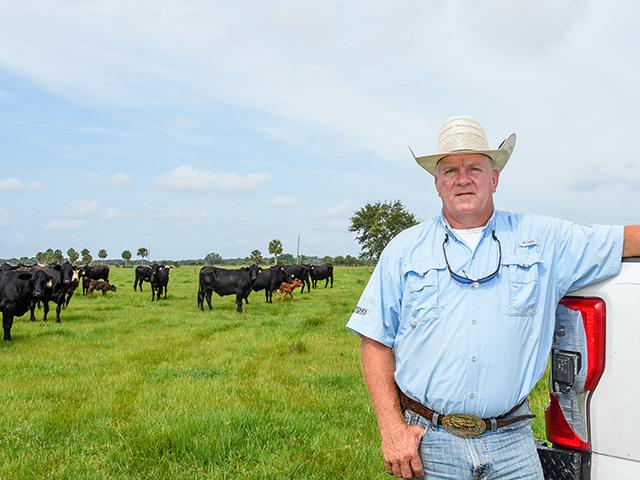Everything Depends on Timing When Early Weaning
Early Weaning Makes the Cut
It's a mighty good feeling to sort off a pen full of fat, slick six-weight calves from their mamas. There are times, though, when it could pay to pull them off a little earlier. It's both a profit and a management decision for Okeechobee, Florida, cattleman Matt Pearce. Early weaning, he says, gives first-calf heifers a chance to play catchup, plus it usually puts more money in his pocket.
"We synchronize and AI [artificially inseminate] our yearling heifers so 80% of the calves come in the first 30 days," he says. "When we turn the bulls in after they calve, they go ahead and get bred. With early weaning, we're managing for the rest of them."
Pearce says there are three options to keep body condition and conception rates from taking a nosedive after heifers calve for the first time.
One, you can feed the heifers. Two, you can creep-feed the calves to take a little of the load off the heifers. Or, three, you can early-wean the calves. After early weaning for eight years, Pearce is sold on option No. 3 for calves born October through January. He weans them in February at 250 to 300 pounds.
TIMING AND NUTRITION
Jason Banta, Texas A&M University Extension beef specialist, says when early weaning is being used to manage productivity of first-calf heifers, everything depends on timing.
"There is a significant drop in the dam's nutritional needs if the calf is weaned at 6 to 8 weeks when she is in peak lactation. That drop in nutritional needs isn't as significant when the calf is older, because she isn't milking as heavy then," he explains.
P[L1] D[0x0] M[300x250] OOP[F] ADUNIT[] T[]
When Pearce weans calves from heifers, whether they are short-bred with their second calf or open, he tries to meet all their nutritional needs. They go on his best hemarthria grass (also known as limpograss) and molasses with a high fat content. He sometimes supplements with cubes. By the time he pulls the bulls two months later, around 90% of those heifers are pregnant with their second calves.
ADD POUNDS TO CULLS
At Hilliard Brothers, in Clewiston, Florida, manager Buck Lee likes to early-wean calves from first-calf heifers plus from older cows. For cows, it's a tactic to put pounds on them before they go to market. On first-calf heifers, it's a way to get body condition up so conception rates don't slip.
"Our conception rates have been as low as 70% when pastures were under water from hurricanes and as high as 92%," he says. "Year in and year out, they're 80 to 85%. They'd probably be 45 to 50% if we weren't early weaning."
Lee weans calves in April at 175 to 275 pounds. He keeps them 65 to 70 days, shipping by the end of June.
CHALLENGES
While early weaning works for Pearce and Lee, Texas' beef specialist Banta says it isn't a practice he routinely recommends. For producers who routinely rely on the approach, he stresses adjustments probably need to be made to the operation's heifer development program.
The exception might be during a severe drought, he notes. "If cows are really thin, then early weaning when calves are 6 to 8 weeks old could be used to help get the cows to come into heat so they can get bred back in time to maintain a yearly calving interval," he says.
PRACTICE ADDS VALUE
With or without the reproductive benefits, Florida's Pearce believes early weaning is an opportunity to add value to calves. In his case, it isn't a terribly risky proposition, with a death loss typically below 1%.
"Once you get them up and going, they're more resilient than older calves," he says, stressing he focuses on health early. Calves are started in pens, given two or three days to rehydrate, then administered fly control, vaccines and dewormers. Bull calves are castrated at this time. On Day 14, Pearce says fecal samples are pulled to see if parasites require retreatment.
These calves get a medicated, pelleted receiving ration in self-feeders along with free choice, fine-stemmed hay. "It is like a magnet," Pearce says of the ration. The calves eat 2.5 to 3% of their body weight (8 to 9 pounds) for the first 21 days, gaining around 3 pounds per head per day.
One more thing the cattleman swears by is the use of organic trace minerals in water troughs. He believes they are key to vaccine efficacy and help with feed intake.
When calves go to grass traps, he swaps them to a self-limiting feed, where they eat 1.25% of their body weight a day and gain 2.2 to 2.5 pounds. They are shipped mid- to late-June weighing around 500 pounds.
It all may sound like a lot of inputs, but Pearce says what he's doing is actually budget-friendly.
"You can feed a light calf cheaper than a heavier calf. My cost of gain runs around 85 to 90 cents a pound.
"If a 250-pound calf sells for $3 per pound at the barn [$750 per head], and a five-weight calf sells for $2.55 per pound [$1,275 per head], that's a $525 per head difference," he calculates. This year, even with higher input costs, Pearce estimates he invested about $250 in feed, health supplies and calf care per head for early-weaned calves. It helps him put $275 in his pocket on each calf.
[PF_1223]
(c) Copyright 2023 DTN, LLC. All rights reserved.




